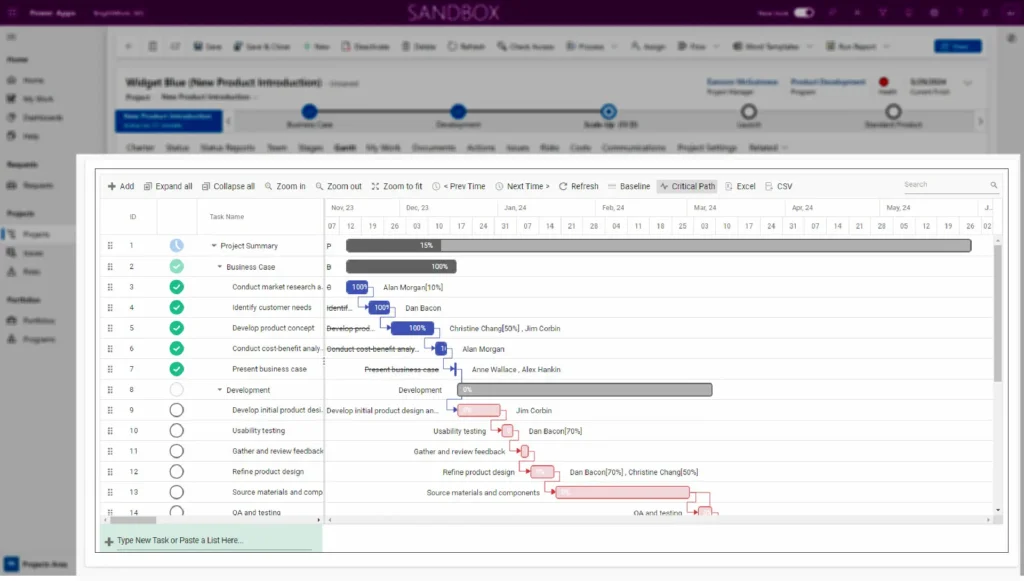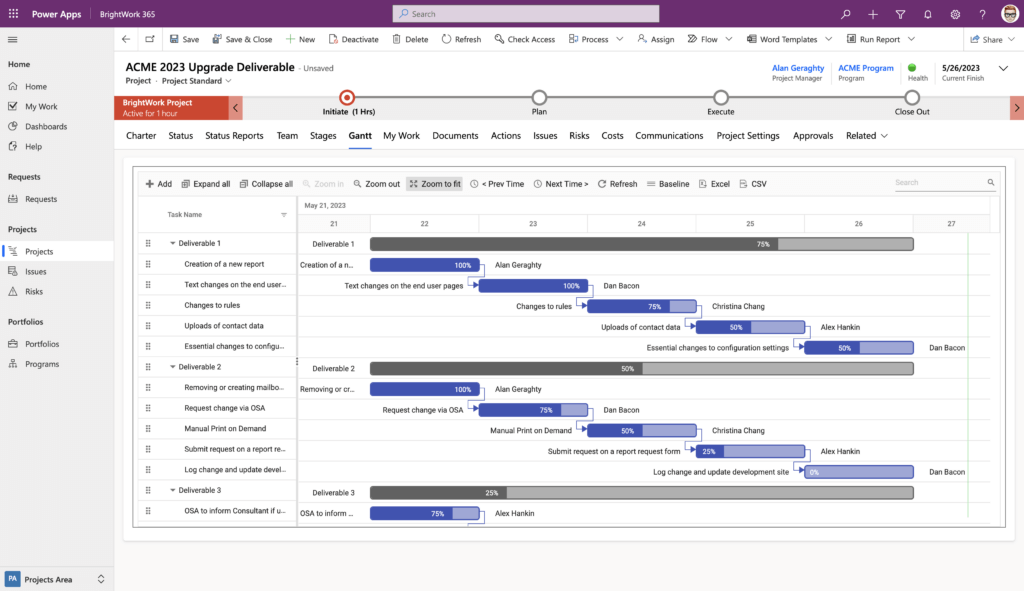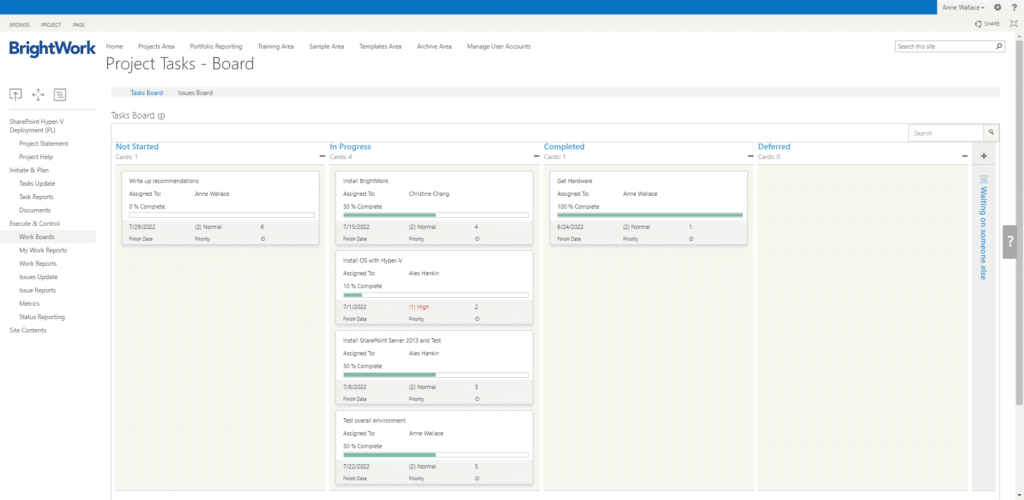Projects are incredibly fast-paced, with competing deadlines, limited resources, and interdependent tasks.
It may seem like collaboration, working closely with the team to solve problems, is just another drain on your time. After all, who has time for more meetings or video calls? However, engaging with the team can increase productivity and save time in the long run.
Though it sounds counterintuitive, collaboration increases when the team knows what to do and can act independently as much as possible. Rather than wasting time figuring out responsibilities or what part of the project comes next, the team can just work.
Adopting a Standard Methodology
A simple way to make more time for team collaboration is to pick a standard method for your project during the planning phase.
A project management methodology functions like a roadmap. It provides teams with a set of instructions and processes to manage a project successfully.
Having the methodology in place will help the team get to work quickly, standardize deliverables, and accelerate decision-making.
There are many different types of project methodologies that have evolved to meet the needs of various industries and organizations. This article outlines seven popular approaches:
- PRINCE2
- Critical Path Management
- Waterfall
- Agile
- Scrum
- Hybrid
- Kanban
7 Popular Project Management Methodologies
Some teams thrive in rigid systems. Others need flexibility. Knowing which method fits your project can mean the difference between chaos and cohesion.
These seven approaches aren’t just different flavors of the same thing, they each bring a distinct rhythm to planning, collaboration, and delivery. Choose wisely, and your team moves faster, communicates better, and finishes stronger.
1. PRINCE2
PRINCE2 (an acronym for PRojects IN Controlled Environments) is a process-driven approach with a focus on business justification and a defined structure for teams.
It was developed in 1989 by the UK government and used in over 150 countries. It divides projects into stages and treats each stage as its own entity with a plan.
Its 7 Principles, 7 Themes, and 7 Processes help teams learn at every stage, define roles, and maintain quality. PRINCE2 adapts to any project type.
2. Critical Path Management
First developed in the 1950s, this methodology uses the duration of project tasks to plan the timeline. The “critical path” defines the longest sequence of tasks and influences the entire schedule.
Critical Path Management enables teams to focus on shorter tasks first, manage risks, allocate resources, and compare planned progress against actual progress.
This approach increases accountability and transparency around task ownership and clarifies the impact of delays on the timeline.

3. Waterfall
The Waterfall methodology was created in the 1970s for construction and manufacturing projects. Each phase starts when the previous phase ends, which prevents revisiting completed stages.
Waterfall typically involves in-depth requirement analysis and planning, all of which are thoroughly documented. There are several benefits to this traditional project management approach:
- Gathering accurate requirements and setting deadlines before commencing work makes planning much easier.
- Progress is easy to measure using defined milestones.
- A clear understanding of the final deliverables often leads to better quality products.
- The emphasis on project documents makes it easy to add new team members as work progresses.

Drawbacks of Waterfall Project Management
Waterfall is often viewed as inflexible and slow to adapt to new technologies. As the plan depends on clear requirements, issues can arise if the customer wants something new during the project.
Customer involvement is minimal after the initial planning phase, which can lead to missed expectations. It’s also difficult to handle risks or unforeseen changes once the schedule is set.
Waterfall is ideal for short-term projects with defined requirements that are unlikely to change.
4. Agile
The Agile system and practices for a software development process emerged in 2001, with a focus on iterative cycles and team collaboration. Agile project management is popular in a range of industries, such as finance, insurance, healthcare, and government.
It divides work into sprints based on customer requirements and business value. Agile allows teams to start quickly and remain flexible in response to customer input. This also means less re-work is needed during each sprint.
Agile relies on clear customer input. It can overrun if scope creeps or if stakeholders fail to provide timely feedback. The lack of long-term plans or a well-defined project scope and constant revisions can also lead to project overrun. Agile methodology is often divided into two frameworks: Scrum and Kanban.
5. Scrum
Scrum is an Agile framework that organizes work in 30-day sprints. Work is managed via two backlogs: the list of prioritized features in a product backlog, and the sprint backlog, taken from the product backlog.
Tasks are managed using a scrum board with lists for ‘to-do’, ‘in progress’, and ‘done’.
A Scrum team comprises a Product Owner who represents the customer; the Scrum Master, who implements the Scrum; and the team, which is responsible for delivering the work.
Key Scrum Ceremonies for Collaboration
Scrum encourages increased collaboration between team members and the project customer. This is achieved using four Scrum ‘ceremonies’:
- Sprint planning
- Sprint demo (work completed in a sprint)
- Daily stand-up
- Sprint retrospective.
6. Kanban
Kanban, a Japanese word for “a card you can see,” is a visual Agile method. Typically, teams use four cards (To-do, In Progress, Review, and Done) on a board, moving cards as work progresses.
Kanban is based on three key principles:
- Visualize project work on a board.
- Limit the number of items in progress (Work In Progress or WIP)
- Maintain flow by moving the next item into WIP when a task is complete.

Collaboration through Kanban
Kanban requires a shift in how teams work together, encouraging collaboration in a number of ways.
Firstly, the team continuously optimizes the workflow, allowing conversations around different ways of working and viewpoints.
Secondly, a visual board reduces unnecessary meetings and emails. When the team does meet, the focus is on upcoming work and potential blockers.
Thirdly, teams can avoid bottlenecks and focus on high-quality work by limiting work in progress and assigning new tasks as soon as capacity is available.
7. Hybrid Methods
Hybrid models blend Waterfall with Agile(or other approaches). Combining the best elements of two methods, a hybrid model allows organizations to implement the right approach for the project.
Additional Project Methods and Frameworks
There are several other methodologies worth considering, such as Lean Project Management, Six Sigma, and PMI/PMBOK. PMBOK stands for the ‘Project Management Body of Knowledge.’ It’s a set of processes, best practices, terminologies, and guidelines for project, program, and portfolio management.
These guidelines are compiled by the Project Management Institute (PMI) and are accepted as standards within the project management industry.
PMBOK is organized into five process groups—initiating, planning, executing, controlling, and closing – and 10 project management Knowledge Areas, including communications, risk management, and scope.
Rather than a strict methodology, PMBOK serves as a flexible framework that supports many project management methods.
How to Choose the Best Project Management Methodology
Project teams often adjust existing methodologies to create an approach appropriate to customer needs. Every project manager should also consider the needs of every project and team before selecting a method.
When selecting the right project management approach, consider the following questions:
- What is the final goal of the project?
- How complex is the project?
- What are the required benefits of the final project deliverable?
- What methodology is currently in use in the organization?
- Are there any learnings or outcomes from previous projects that should be considered?
- How involved does your customer want/need to be in the project?
- Do your stakeholders prefer a particular methodology?
Start Managing Projects with BrightWork 365
No single method fits every project. It depends on your goals, your team, and how complex the work gets. What really counts is using an approach that brings people together and keeps things moving. BrightWork 365 gives you the tools to make that happen. Simple to use. Built to adapt. Ready when you are.
